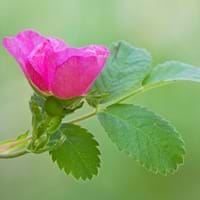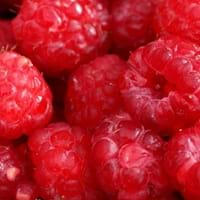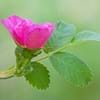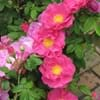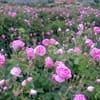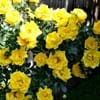Life Span
Perennial
Perennial
Type
Flowering Plants, Ornamental Plant, Perennial
Fruit
Origin
California, Caribbean, Mexico
Hybrid origin
Types
Not Available
PRIMOCANE RED RASPBERRIES ,FLORICANE RED RASPBERRIES
Habitat
Chaparral, Foot Hills, Woodlands
Forests, Mountains, Tree canopies
USDA Hardiness Zone
Not Available
4-8
AHS Heat Zone
Not Available
8-1
Sunset Zone
Not available
A1, A2, A3, 1a, 1b, 2a, 2b, 3a, 3b, 4, 5, 6, 7, 8, 9, 10, 11, 12, 13, 14, 15, 16, 17, 18, 19, 20, 21, 22, 23, 24
Habit
Upright/Erect
Upright/Erect
Flower Color
Variety of colors
White
Flower Color Modifier
Bicolor
Bicolor
Fruit Color
Non Fruiting Plant
Red
Leaf Color in Spring
Gray, Gray Green
Green
Leaf Color in Summer
Gray, Gray Green
Green
Leaf Color in Fall
Gray, Gray Green
Green
Leaf Color in Winter
Gray, Gray Green
Light Green
Leaf Shape
Pinnate
Toothed
Plant Season
Spring, Summer, Fall
Spring, Summer, Fall
Sunlight
Full Sun, Partial Sun
Full Sun, Partial Sun
Type of Soil
Loam, Sand
Loam, Sand
The pH of Soil
Acidic, Neutral
Acidic, Neutral
Soil Drainage
Well drained
Well drained
Bloom Time
Spring, Late Spring, Early Summer, Summer, Late Summer, Early Fall, Fall
Spring, Summer
Repeat Bloomer
Not Available
Yes
Tolerances
Drought
Drought
Where to Plant?
Container, Ground, Pot
Container, Ground, Pot
How to Plant?
Cuttings
Suckers
Plant Maintenance
Medium
Medium
Watering Requirements
Average Water Needs
Average Water Needs
In Summer
Lots of watering
Lots of watering
In Spring
Moderate
Moderate
In Winter
Average Water
Average Water
Soil pH
Acidic, Neutral
Acidic, Neutral
Soil Type
Loam, Sand
Loam, Sand
Soil Drainage Capacity
Well drained
Well drained
Sun Exposure
Full Sun, Partial Sun
Full Sun, Partial Sun
Pruning
Remove damaged leaves, Remove dead branches, Remove dead leaves
Remove damaged leaves, Remove dead branches, Remove dead leaves
Fertilizers
All-Purpose Liquid Fertilizer
All-Purpose Liquid Fertilizer
Pests and Diseases
Beetles, Black Spot, Caterpillars, Downy mildew, Mosaic viruses, Powdery mildew, Rust, Scale insects, Thripes
Red blotch
Plant Tolerance
Drought
Drought
Flowers
Showy
Insignificant
Flower Petal Number
Double
Single
Edible Fruit
Not Available
Yes
Foliage Texture
Medium
Medium
Foliage Sheen
Glossy
Matte
Invasive
Not Available
No
Self-Sowing
Not Available
No
Attracts
Birds, Butterflies
Birds, Butterflies
Allergy
Rash
Abdominal pain, breathing problems, Diarrhea, Eczema, Fainting, Itchiness, Nausea, Vomiting, wheezing
Aesthetic Uses
Showy Purposes
bank hedging, Cottage Garden, Slopes hedging
Beauty Benefits
Not Available
Not Available
Environmental Uses
Air purification
Air purification
Medicinal Uses
Not Available
anti-inflammatory, Anti-oxidant, Cancer, Improve heart health, Liver Protection, Skin Whitening and Pigmentation Medicine, Weight loss
Part of Plant Used
Flowers
Fruits, Leaves, Root
Other Uses
Oil is used in perfume, soaps, creams, etc.
Jam, Jelly, Used As Food, Used for its medicinal properties
Used As Indoor Plant
Yes
No
Used As Outdoor Plant
Yes
Yes
Garden Design
Container, Cutflower, Feature Plant, Foundation, Mixed Border, Topiary / Bonsai / Espalier
Edible, Fruit / Fruit Tree, Hedges
Botanical Name
Rosa californica
RUBUS 'Autumn Bliss'
Common Name
California wildrose, California rose
Red Raspberry
In Hindi
कैलिफोर्निया गुलाब
रूबस idaeus
In German
Kalifornische Hecken-Rose
Himbeere
In French
Le rosier de Californie
Rubus idaeus
In Spanish
Rosa californica
Rubus idaeus
In Greek
Καλιφόρνια αυξήθηκε
σμέουρο
In Portuguese
California aumentou
Rubus idaeus
In Polish
California róży
Rubusidaeus
In Latin
California resurrexit
Rubus idaeus
Phylum
Magnoliophyta
Magnoliophyta
Class
Magnoliopsida
Magnoliopsida
Clade
Not Available
Angiosperms, Eudicots, Rosids
Tribe
Not Available
Rubeae
Subfamily
Not Available
Rosoideae
Number of Species
Not Available
Not Available
Season and Care of California Rose and Red Raspberry
Season and care of California Rose and Red Raspberry is important to know. While considering everything about California Rose and Red Raspberry Care, growing season is an essential factor. California Rose season is Spring, Summer and Fall and Red Raspberry season is Spring, Summer and Fall. The type of soil for California Rose is Loam, Sand and for Red Raspberry is Loam, Sand while the PH of soil for California Rose is Acidic, Neutral and for Red Raspberry is Acidic, Neutral.
California Rose and Red Raspberry Physical Information
California Rose and Red Raspberry physical information is very important for comparison. California Rose height is 150.00 cm and width 150.00 cm whereas Red Raspberry height is 120.00 cm and width 120.00 cm. The color specification of California Rose and Red Raspberry are as follows:
California Rose flower color: Variety of colors
California Rose leaf color: Gray and Gray Green
Red Raspberry flower color: White
- Red Raspberry leaf color: Green
Care of California Rose and Red Raspberry
Care of California Rose and Red Raspberry include pruning, fertilizers, watering etc. California Rose pruning is done Remove damaged leaves, Remove dead branches and Remove dead leaves and Red Raspberry pruning is done Remove damaged leaves, Remove dead branches and Remove dead leaves. In summer California Rose needs Lots of watering and in winter, it needs Average Water. Whereas, in summer Red Raspberry needs Lots of watering and in winter, it needs Average Water.
